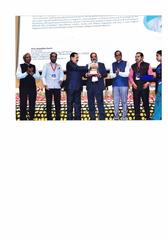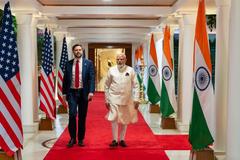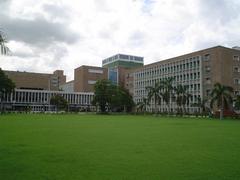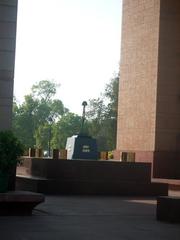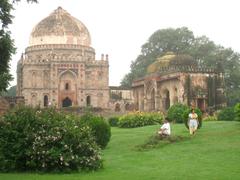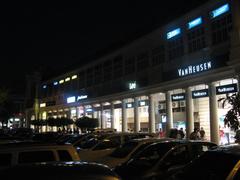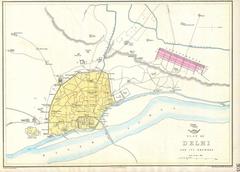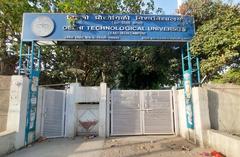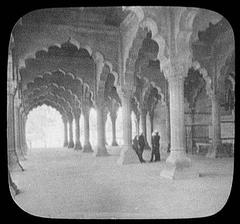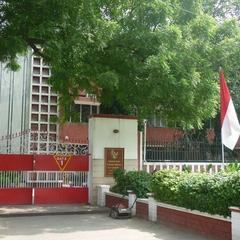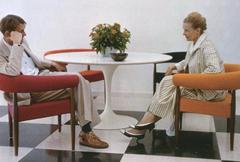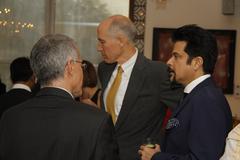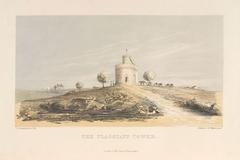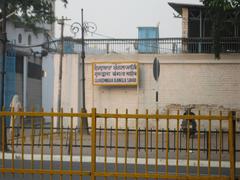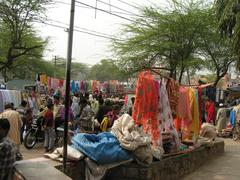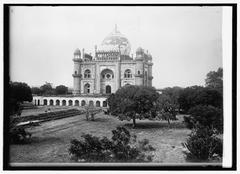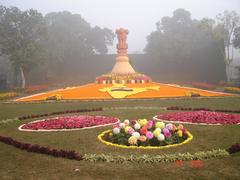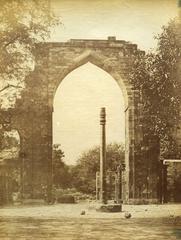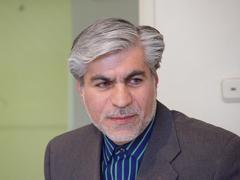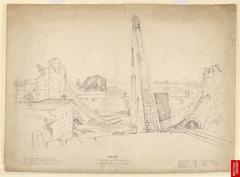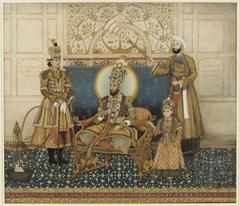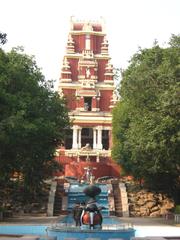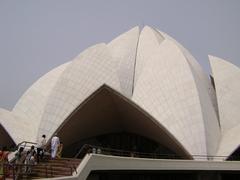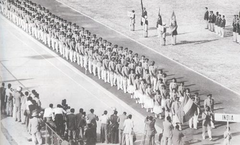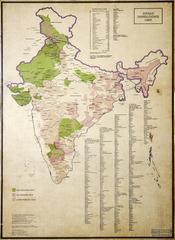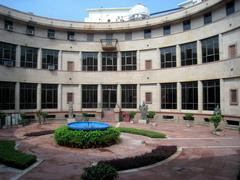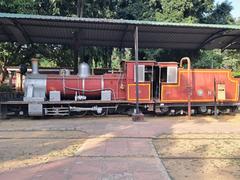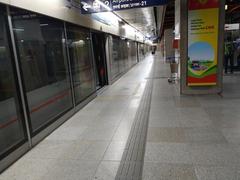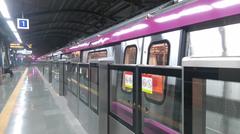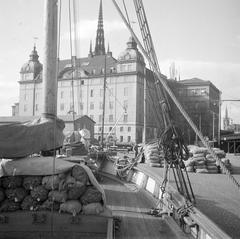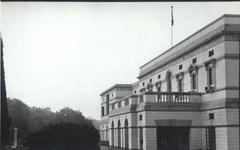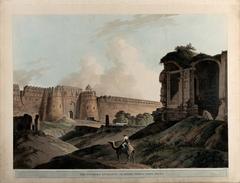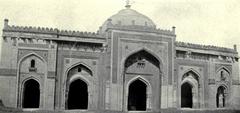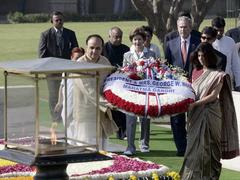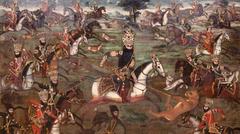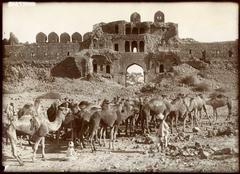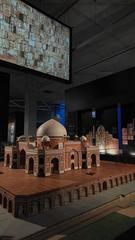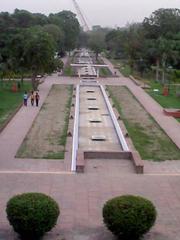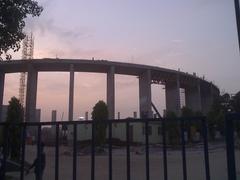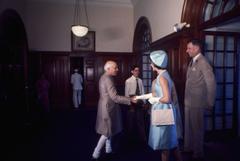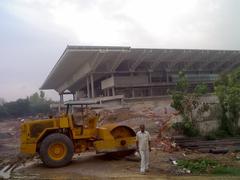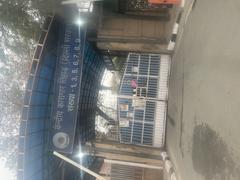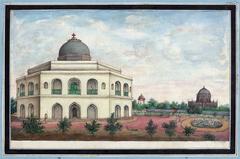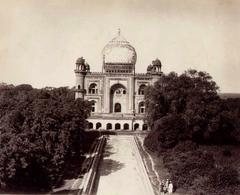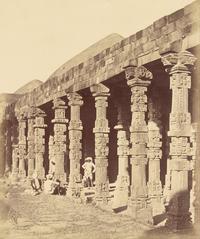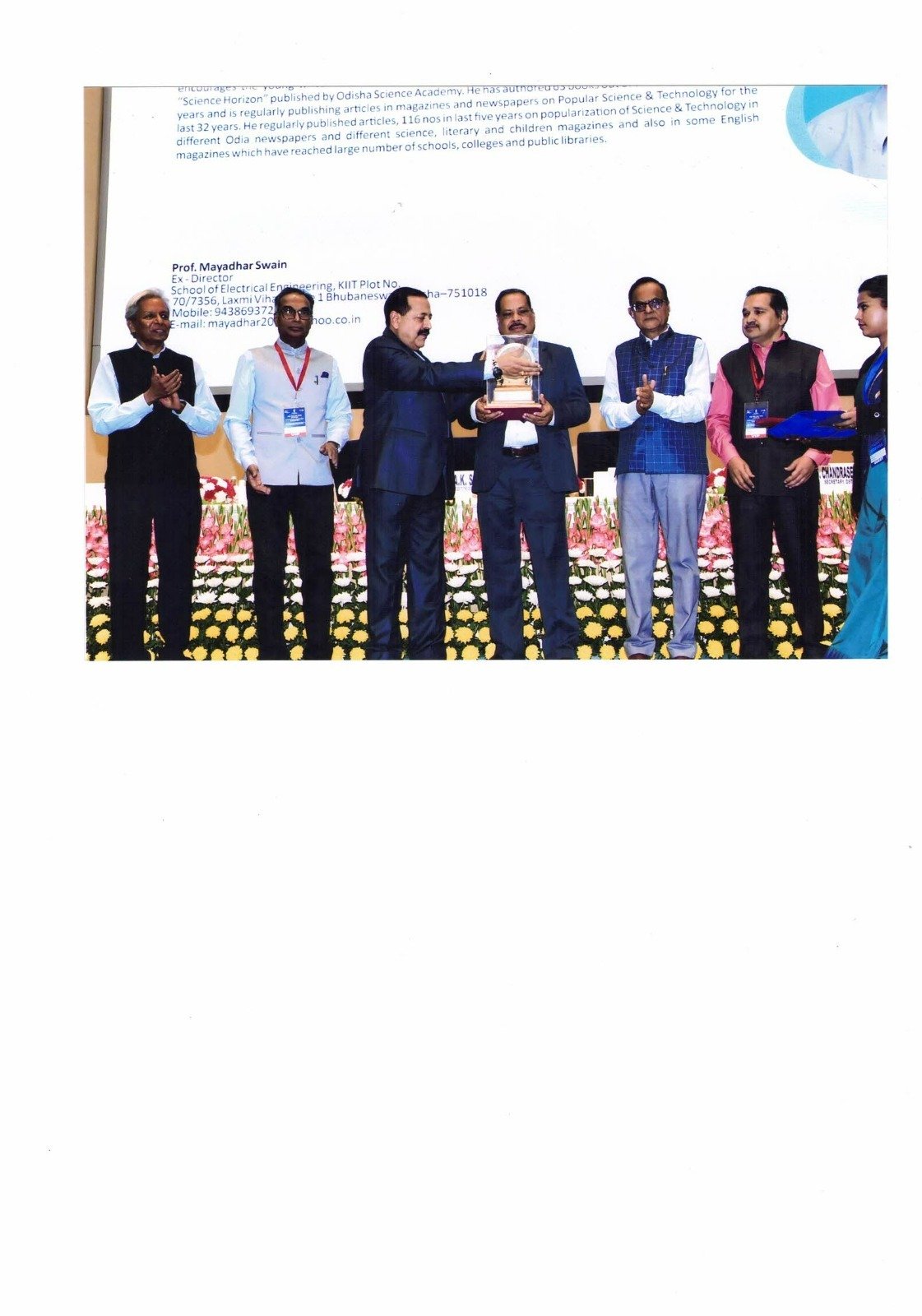
Vigyan Bhavan New Delhi: Visiting Hours, Tickets, and Historical Significance
Date: 14/06/2025
Introduction
Vigyan Bhavan, located in the heart of New Delhi, stands as a monumental symbol of India’s post-independence progress and diplomatic stature. Established in 1956 under the vision of Prime Minister Jawaharlal Nehru, it was designed to host national and international events, blending India’s modern ambitions with its rich heritage. Erected on the former residence of Maulana Abul Kalam Azad—India’s first Education Minister—the site reflects a unique convergence of historical legacy and modern nation-building (The Patriot).
Architect R.P. Gehlote’s design for Vigyan Bhavan is a masterful synthesis of British Raj, Hindu, Buddhist, and Mughal influences, incorporating indigenous motifs like jharokhas and jaali work into its structure. The center boasts a spacious, pillar-less plenary hall for over 1,000 delegates, lush gardens, and a location surrounded by New Delhi’s most prominent landmarks (Wikipedia; 2Exhibitions). Over the decades, Vigyan Bhavan has hosted pivotal events such as the Commonwealth Heads of Government Meeting (CHOGM), Non-Aligned Movement summits, and the National Film Awards, cementing its role as the epicenter of India’s governance, culture, and scientific discourse (PIB; ShowInCity; Live Your City).
This guide provides an in-depth exploration of Vigyan Bhavan’s history, architecture, visitor information, and practical advice for those planning to attend events or explore nearby attractions.
Table of Contents
- Historical Genesis of Vigyan Bhavan
- Architectural Significance and Design Philosophy
- Role in India’s Diplomatic and Political History
- Facilities and Amenities
- Visitor Information: Visiting Hours, Tickets, and Accessibility
- Major Events and Functions Hosted
- Nearby Attractions and Travel Tips
- Infrastructure and Technological Capabilities
- Future Developments
- Frequently Asked Questions (FAQ)
- Summary and Conclusion
- References
Historical Genesis of Vigyan Bhavan
Conceived in the 1950s to address the need for a world-class convention facility in the capital, Vigyan Bhavan was constructed on the site of Maulana Abul Kalam Azad’s former residence. The project was expedited to coincide with the hosting of the UNESCO summit in 1956, with R.A. Gehlote of the Central Public Works Department designing the building (The Patriot). The adjacent Ashok Hotel was designed by Prof. E.B. Doctor and both structures were completed within a year—a remarkable achievement for their time.
Architectural Significance and Design Philosophy
Synthesis of Indian and Colonial Influences
The architecture of Vigyan Bhavan merges the symmetry of the British Raj with Indian motifs such as jaali screens and jharokhas, creating a space both modern and culturally resonant (The Patriot). The building features:
- Symmetrical Facade: Inspired by Lutyens’ Delhi but softened with Indian decorative elements.
- Pillar-less Main Hall: An engineering marvel hosting large gatherings.
- Indigenous Motifs: Mughal and Rajasthani influences seen in latticework and balconies.
Functional Design
Built as a purpose-driven convention center, Vigyan Bhavan comprises a central plenary hall, multiple smaller conference rooms, and support facilities for large-scale events. The landscaping, overseen by Nehru, includes mango and gulmohar trees, enhancing the building’s aesthetic and tranquil setting.
Role in India’s Diplomatic and Political History
Vigyan Bhavan has hosted pivotal events including the CHOGM, the Non-Aligned Movement summits, National Film Awards, and major scientific forums. Its location near the Ashok Hotel created a seamless ecosystem for dignitaries, reinforcing New Delhi’s reputation as a global diplomatic hub (The Patriot; Wikipedia).
Facilities and Amenities
Conference and Meeting Spaces
- Plenary Hall: Seats over 1,200 delegates, pillar-less for unobstructed views (Wikipedia).
- Additional Halls: Six smaller conference halls (65–375 seats), committee rooms, and a media center in the Annexe (Scribd).
- Exhibition Hall & VIP Lounge: Spaces for displays and dignitaries (2Exhibitions).
Dining and Hospitality
Food services are managed by the Ashok Group (ITDC) in “The Atrium,” with on-site accommodation and hospitality for delegates (Wikipedia; Scribd).
Accessibility
Facilities include ramps, elevators, accessible restrooms, and designated seating for differently-abled visitors (Yappe).
Visitor Information: Visiting Hours, Tickets, and Accessibility
Visiting Hours and Tickets
- General Public: No regular public visiting hours; access is primarily for event attendees and invitees.
- Official Events: Check event-specific schedules and access policies via government announcements (ShowInCity).
- Guided Tours: Not routinely available; photography is restricted except during authorized events.
Security Protocols
Strict security measures are enforced. Only those with invitations or event passes are admitted, and all visitors undergo screening. Carry official ID and arrive early to accommodate checks (ShowInCity).
Accessibility for Persons with Disabilities
Ramps, elevators, and accessible restrooms are provided, but advance coordination with event organizers is recommended for additional assistance.
Major Events and Functions Hosted
Vigyan Bhavan is renowned for hosting:
- Diplomatic Summits: Commonwealth, Non-Aligned Movement, and SAARC meetings.
- Governmental Conferences: Policy announcements, inter-ministerial dialogues.
- Cultural and Award Ceremonies: National Film Awards and scientific symposiums.
- Upcoming Events: Navkar Mahamantra Divas (April 2025) and MSMECCI Conference (April 2025) (ETV Bharat; TradeIndia).
Nearby Attractions and Travel Tips
- India Gate: Iconic war memorial, 1km away.
- Rashtrapati Bhavan: Presidential residence with guided tours.
- National Museum: Extensive artifact collections.
- Lodhi Gardens: Historic park with tombs.
- Transport: Metro (Central Secretariat station), taxis, ride-sharing. Parking is limited—use public transport when possible (Live Your City; Times of India Blog).
Infrastructure and Technological Capabilities
- Architectural Style: Blend of modernism with Mughal, Hindu, and Buddhist motifs, including chaitya arches and jaali screens (Wikipedia).
- Technological Facilities: Multilingual conference systems, audio-visual tech, Wi-Fi, satellite links, media center (2Exhibitions).
- Security: Surveillance, restricted access, and screening, particularly during high-level events (Yappe).
- Location: Maulana Azad Road, Rajpath Area, Central Secretariat, New Delhi (Live Your City).
Future Developments
Vigyan Bhavan is slated for redevelopment under the Central Vista Project, with plans for a new Central Conference Center to replace the current structure and further modernize the city’s conference infrastructure (Wikipedia).
Frequently Asked Questions (FAQ)
Q: Can the public visit Vigyan Bhavan?
A: General access is limited to event attendees and invitees. Public visits are allowed only during specific events with prior registration.
Q: What are the visiting hours?
A: There are no fixed public visiting hours; access depends on event schedules and invitations.
Q: Are tickets required?
A: Yes, tickets or official invitations are required for most events.
Q: How accessible is Vigyan Bhavan for persons with disabilities?
A: Facilities include ramps and elevators. Coordinate with event organizers for additional assistance.
Q: What are some nearby attractions?
A: India Gate, National Museum, Rashtrapati Bhavan, and Lodhi Gardens.
Summary and Conclusion
Vigyan Bhavan remains an enduring emblem of India’s post-independence identity, seamlessly blending historical grandeur with modern functionality. As a distinguished venue for diplomatic summits, governmental conferences, cultural celebrations, and scientific forums, it has played a pivotal role in shaping India’s national narrative and international presence (The Patriot; Wikipedia). Its architectural elegance, strategic location, and comprehensive facilities make it a landmark of immense cultural and political significance.
Visitors interested in attending events should monitor official government portals and event organizers, keeping in mind the strict security protocols and invitation-only policies (PIB; 2Exhibitions). Plans under the Central Vista Redevelopment Project will shape its legacy for future generations (Wikipedia). Meanwhile, exploring nearby attractions provides a holistic glimpse into New Delhi’s rich heritage.
For those planning a visit, coordinate with event schedules, adhere to security requirements, and consider accessibility needs. Stay updated on events and visiting information through the Audiala app and official channels.
Visuals and Media


Map: Vigyan Bhavan Location on Google Maps
References
- Remembering the iconic Hotel Ashok and Vigyan Bhawan, The Patriot
- Vigyan Bhawan, Wikipedia
- Vigyan Bhawan New Delhi: Role, Facilities, Visiting Hours, and Visitor Information, 2Exhibitions
- Press Release on National Science Day and related events, PIB
- Vigyan Bhawan Venue Details, ShowInCity
- Vigyan Bhavan Location and Visitor Guide, Live Your City
- Navkar Mahamantra Divas 2025 and MSMECCI Conference, ETV Bharat & TradeIndia, https://www.tradeindia.com/tradeshows/venue/vigyan-bhawan/4754/
For the latest updates on events, visiting hours, and travel tips, download the Audiala app and follow our social channels.
